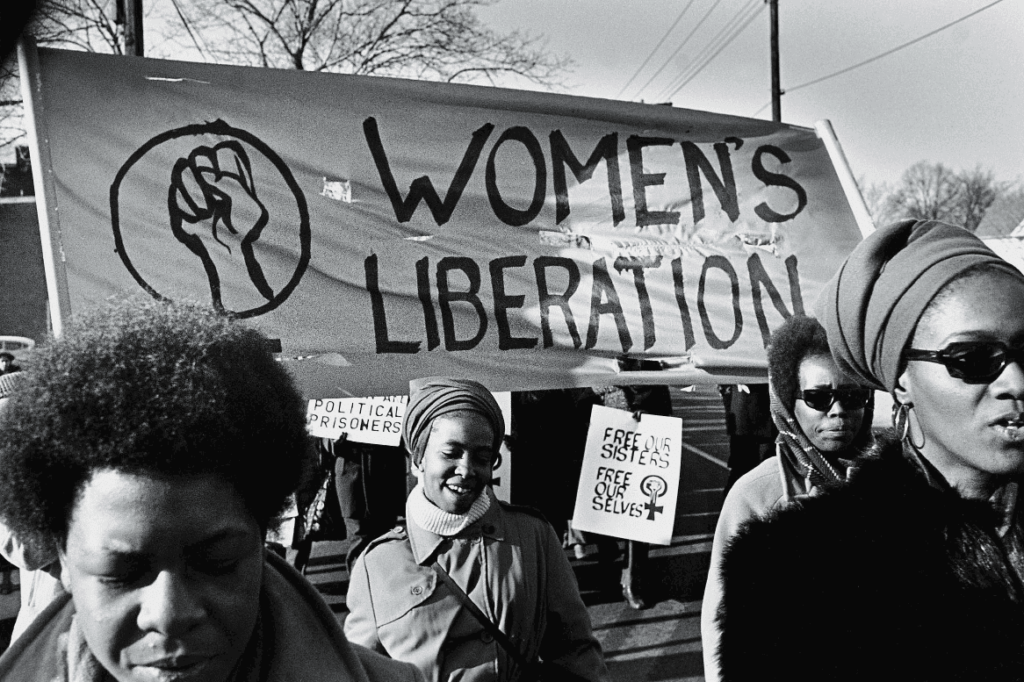Definition
Feminism comes from the Latin root femina meaning “women"+ ism (English) making the word into a practice, system, or doctrine. When put together, the word feminism is the doctrine advocating social, political, and all other rights of women equal to those of men. In other words, women should be allowed the same rights, power, and opportunities as men and be treated in the same way, or the set of activities intended to achieve state.History/Background
The word feminism itself was first coined by French philosopher, Charles Fourier (as féminisme). However, Mary Wollstonecraft is known as the “mother of feminism”. She is seen by many as the founder of feminism due to a book she wrote called Vindication of Rights of Man in 1791 which is now considered a classic in feminist history. This term comes from the difference in observations that men have to women. One of the observations Mary Wollenstonecraf points out is that the duties of each gender differed. More so, men were seen to be superior to women. Philosopher Kant accepted the idea that women are incapable of reason and therefore only a man could be trusted to exercise thought and reason (Jason L. Powell, 2013, Feminism). Therefore, he believed only men could be citizens and women could not. However, Mary Wollenstonecraft voiced her opinion against Kant’s idea. She speaks up for the equality of women to men. She describes this as true freedom. To be equally free is when women and men are equally dutiful in the exercise of their responsibilities to family and state. Additionally, in the 19th century, the idea and rise of feminist movements rose in popularity. US feminists such as Elizabeth Cady Stanton and Susan Anthony argued that the equality of women required full citizenship for women. The suffrage movement in the 20th century is similar and connected to feminism because it added a key voice in advocating and striving for political action that represented women in the political and labor force. This would eliminate the inequality that men held over women. This movement granted the right for women to vote using a congressional amendment to the Constitution (19th Amendment). Thus, successfully reaching the idea that the rights of women are equal to those of men (regarding voting status).
Examples
Womens Suffrage

The struggle for women’s voting rights in the US lasted for decades and was known as the women’s suffrage movement. Winning that right took reformers and activists close to a century, and the struggle was not without its challenges: disagreements over tactics often put the movement in danger of collapsing. Nevertheless, the 19th Amendment to the Constitution was ultimately enacted on August 18, 1920, giving all American women the right to vote and stating for the first time that they should have the same rights and obligations as men as citizens. This looked like talking about the issues. People were gathered in Seneca Falls, New York to discuss the problem of women’s rights. It was agreed that American women were autonomous individuals who deserved their own political identities (Women’s Suffrage, History.com, 2009). This affected African Americans because it endangered black enfranchisement by tying it to the markedly less popular campaign for female suffrage. As a result, African Americans would challenge this while American women would support it.
Equal Rights Amendment

A proposed amendment to the United States Constitution that would guarantee equal legal rights for all American citizens, regardless of sex. This would eliminate any discrimination regarding sex. This would affect everyone. This would look like ending the legal distinctions between men and women in terms of divorce, property, employment, and other matters. Women were in support of this while men wouldn’t because they would be less vocal.
Womans Liberation movement

This movement sought equal rights and opportunities for women. The movement began as a network of local groups communicating its message through its newsletters. Members also attended national conferences. This allowed discussion of issues and strategies. Campaigns for equal pay for equal work were created. They argued that women should have equal opportunities in the job market. It also fought for political representation of women and the right to participate in formal politics. This affects women because they would have access to doing more work than they did before. They would be in favor of this. This would cause a busier life. However, big corporations would be opposed to the idea of women being paid the same because this would mean they would have to give more money. Also, men would have policies in their favor when women gain the right to participate in politics.
Controversies
The term feminism can be said to be controversial earlier in time, especially when the term was first popularized. For instance, Durkheim is a 19th-century French sociologist who rejects the idea of feminism. He claims that there is no reason to suppose that women may ever be able to fulfill the same functions in society as men. He argues this with the division of labor and differentiation. The division of labor forms the basis for morality and organic solidarity in modern society. Therefore, because women do not participate in labor and are absent from the creation of social facts, they are not seen as consisting of the subject matter of sociology and therefore a victim of gender exclusion. More so, Max and Wber also supported feminism. Marianne Weber viewed male models as the power of authority. He assumed that the male-female division of labor was natural, the mother-child relationship was natural, and that most of the male-female relationships could be explained on the basis of biological factors. Thus, women should stay in their place to do what they were “born” to do. This idea creates a barrier that women should not be involved in anything else besides motherhood. Women were viewed as individuals with less power than men because men go out and do more “heavy” or physical labor. This limits women to participating in politics or voicing their opinions. This creates an imbalance and unequal way to view men and women justifying the oppression of the rights of women equal to those of men.
Citations
1.Powell, Jason L. Feminism. Nova Science Publishers, Inc, 2013. EBSCOhost, search.ebscohost.com/login.aspx?direct=true&db=e000xna&AN=606402&site=ehost-live score=site.
2. London School of Economics and Political Science. “Women’s Liberation Movement.” London School of Economics and Political Science, www.lse.ac.uk/library/collection-highlights/womens-liberation-movement.
3. “Women’s Suffrage – the U.S. Movement, Leaders and 19th Amendment.” HISTORY, 29 Oct. 2009, www.history.com/topics/womens-history/the-fight-for-womens-suffrage.
4.“Equal Rights Amendment.” National Archives, 17 June 2022, www.archives.gov/women/era#:~:text=Three%20%20years%20after%20the%20%20ratification,%2C%20employment%2C%20and%20other%20matters.
5. Isaksson, Anna. “Classical Sociology Through the Lens of Gendered Experiences.” Frontiers in Sociology, Frontiers Media, Oct. 2020, https://doi.org/10.3389/fsoc.2020.532792.
